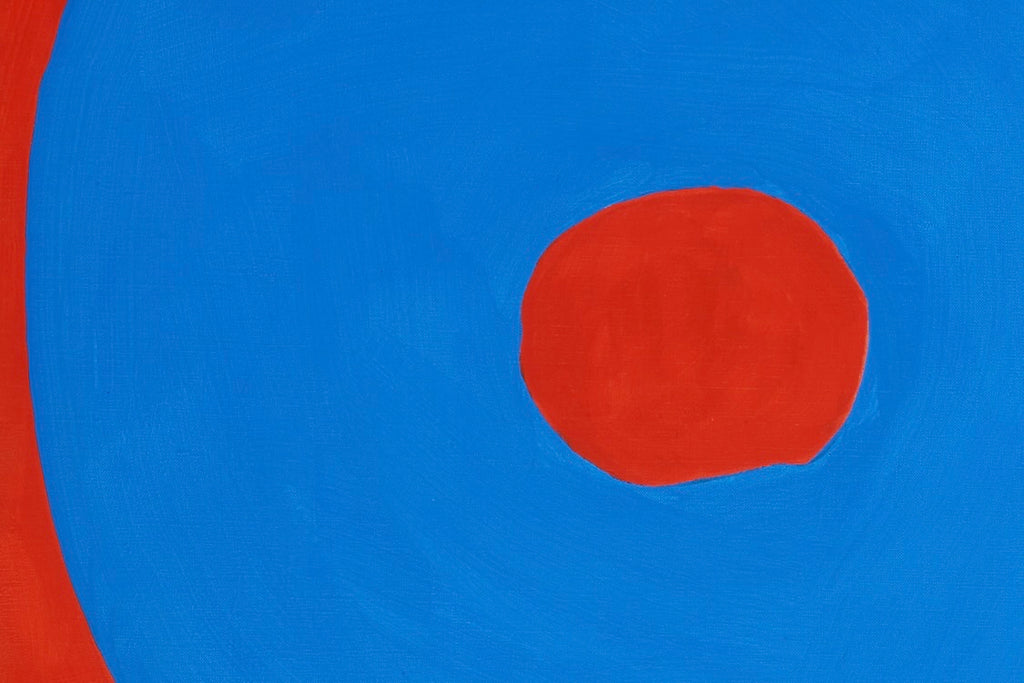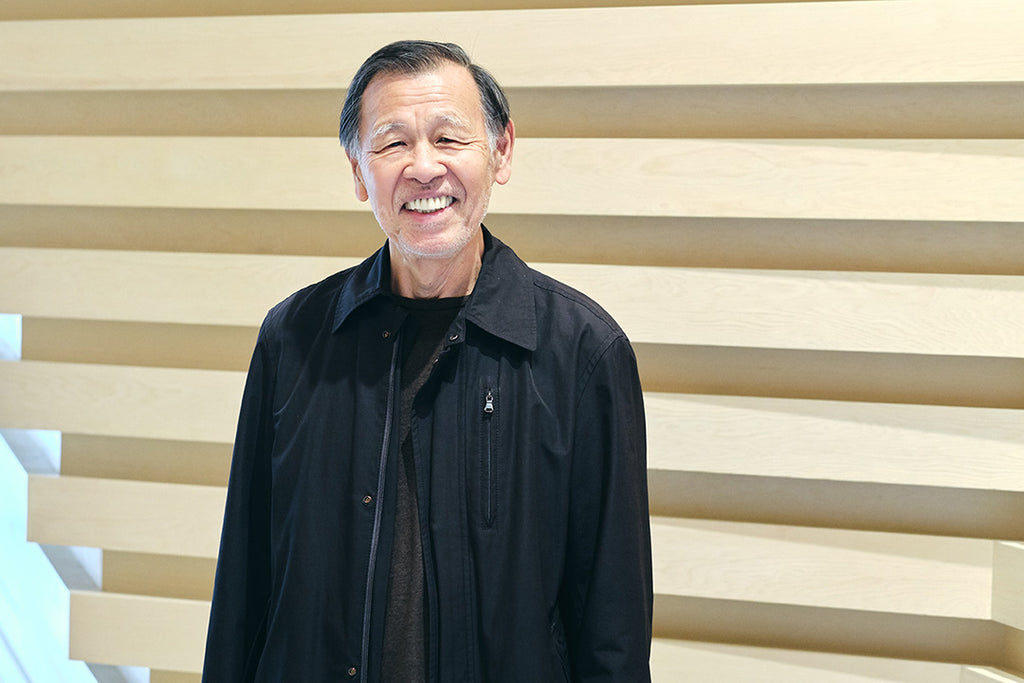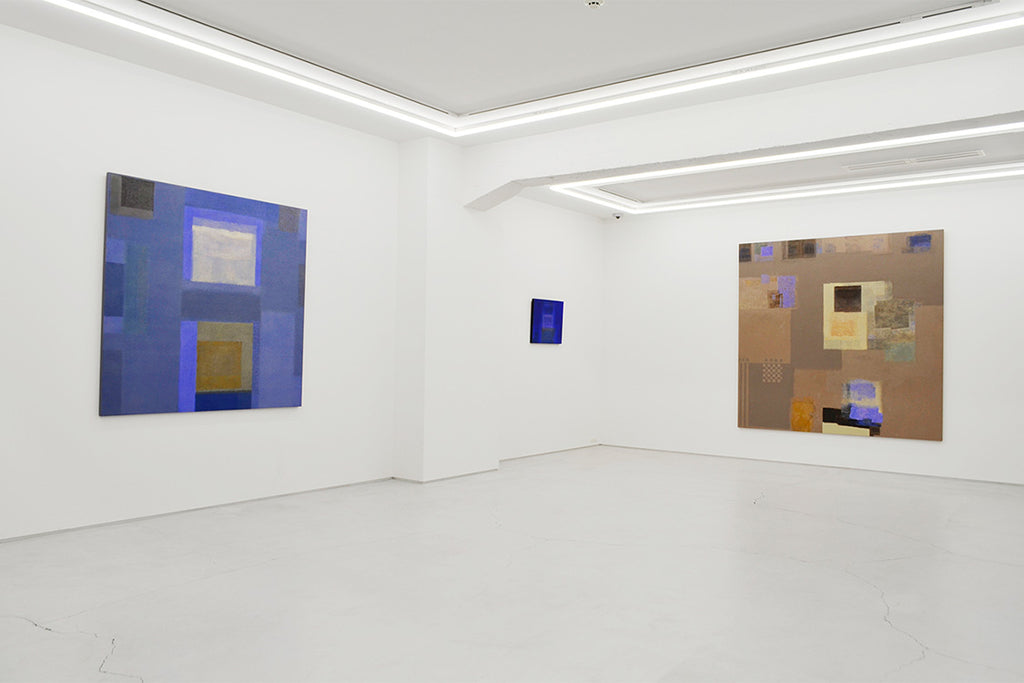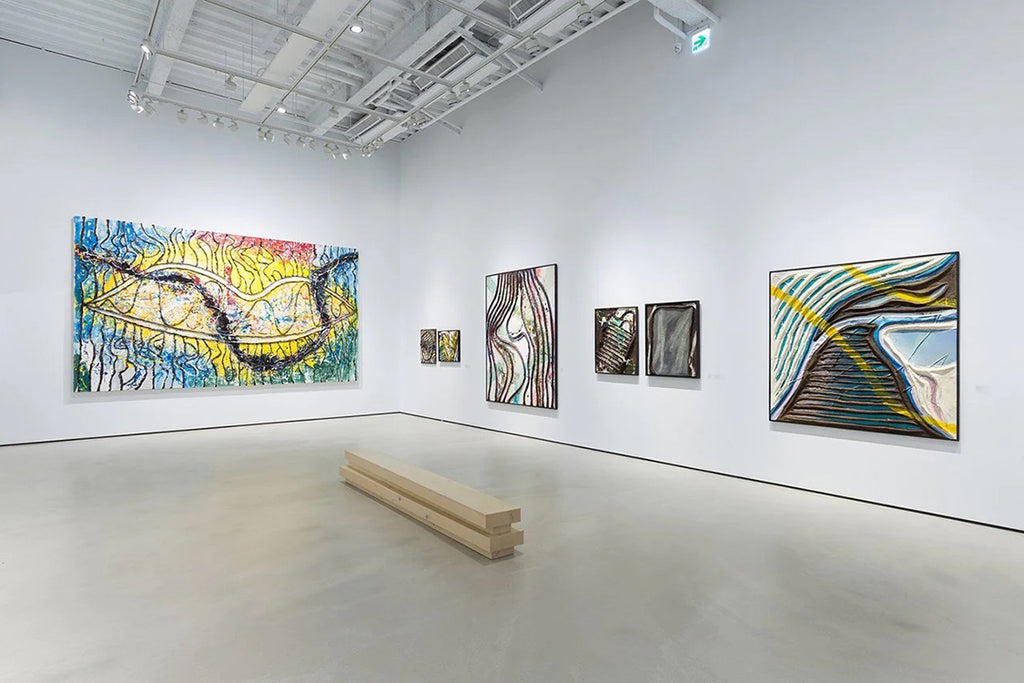ARTICLES
Learning from the Collectors: How to Deal with and Enjoy Art
A New Appreciation Contemporary Japanese and Asian Art
16/23

A New Appreciation Contemporary Japanese and Asian Art
In our ongoing series, we present the digital archive of the book 'A New Appreciation Contemporary Japanese and Asian Art' This book delves into internationally acclaimed artists and the dynamics of the Asian art market. The sixteenth installment features a dialogue between Yuichi Kawasaki, who was an art collector, and Koei Shiraishi.
Learning from the Collectors: How to Deal with and Enjoy Art|Interviews of Experts in the Art Industry
Yuichi Kawasaki
Art Collector
Koei Shiraishi
Chief Executive Officer, Whitestone
Shiraishi: Mr. Kawasaki receives much attention as a rising young entrepreneur in the internet and advertisement business. On the other hand, Mr. Kawasaki is a great art collector (mainly contemporary art of domestic and international artists). He is also unique since he is a collector from the young generation. He is promising for us gallerists as well. I would like to focus on the collector side of him today.
Kawasaki: Please do not go too hard on me.
Encounter the Unknown World under the Rain in Karuizawa
Shiraishi: Let’s start with the episode of why you started collecting art.
Kawasaki: It was about seven to eight years ago when I was working on establishing my own company. I traveled to Karuizawa with my wife. We had a plan to cycle or drive around Kumobaike pond, a famous sight-seeing spot. However, as soon as we arrived at Karuizawa, we were met by heavy rain. As we wondered around the rainy town without any purpose, we found a building that looked like a museum with the sign that read “Yayoi Kusama exhibition.”
And my wife insisted, “I really want to see this exhibition. We can’t do anything in this rain anyway.” On the contrary, I thought, “Spending time in a museum in Karuizawa is just a waste of time.” We argued a little and I agreed to accompany her to the museum for just one hour.
Completely Struck by the World of Kusama! Spending Most of the Startup Funds for the First Collection
Shiraishi: It is the Karuizawa New Art Museum that opened in 2012 under the management of our foundation. You saw the Yayoi Kusama exhibition in the opening year as a result of your wife’s forceful invitation. You intended to kill a little time before the rain stopped (laugh).
Kawasaki: Yes, I had no expectations (laugh).
My knowledge on Ms. Kusama was so limited then, that she seemed like a famous artist since she collaborated with Luis Vuitton. My wife knew her better.
However, as I entered the museum and walked around the exhibition, I was completely taken by the world of Kusama. The works were sending something like the artist’s power or impact to the viewers.
It was the first time that I ever encountered art in such a shocking way. As I walked through the exhibition, I wanted to own one of her works no matter what. After dithering over the print (one million yen), or the painting (actually priced at eleven million yen), I decided to buy the pumpkin painting (canvas size 3) according to the advice of Mr. Nakashima, a senior managing director of your company.
Shiraishi: What a surprise to purchase a work on the day you encountered it! It is also very rare to meet a young collector like you, Mr. Kawasaki. You must be in your late twenties then. How did you finance the purchase?
Kawasaki: I was twenty-seven years old and had just quit my job to start my own company. To start my own company, I had approximately fifteen million yen in savings. I spent eleven millions of it on one of Kusama’s works that I saw for the first time. Looking back, it was a very brave decision.
Shiraishi: Your wife was OK with it, right?
Kawasaki: My wife then did not know anything about the amount of my savings and how I spent money. I did not allow her to say anything about my decision to purchase Kusama’s work (laugh).

Yuichi Kawasaki standing in front of his favorite work.
Centering on Contemporary Art, the Collection Grew to over Five Hundred
Shiraishi: By the way, was there any change in your mind or business after purchasing the first art work?
Kawasaki: Yes, after hanging Kusama’s work in our living room, the space came to be vitalized. And the Kusama power flies from the painting on the wall to us every day. The conversation with the painting energized me and made me want to do my best in my business. Since I was just starting up, the message the painting conveys inspired my motivation.
I then wanted to have something on the other side of the wall. I did my research by searching and reading magazines to see what kind of paintings are worth having. Then, I purchased a print by Yoshitomo Nara for my second collection. It was about three million yen at that time.
Just like that, I was gradually addicted to art (laugh). Luckily, the price of their works in the global market have become unexpectedly high.
Shiraishi: Yes, we were surprised, too. Since Karuizawa, you have built a collection of over five hundred works within a decade.
Kawasaki: Yes, I believe the number is about right. Since then, I have collected artworks through domestic and international art fairs, exhibitions, and solo exhibitions based on my own research.
My collection concept is contemporary art regardless of the nationality of the artist. I see the actual work and purchase the works according to my intuition.

Mr. Kawasaki enjoys art in the president’s office.
Enjoy Art in the Living Space
Shiraishi: You have focused on the works of younger artists.
Kawasaki: I follow the work of artists like Yukimasa Ida, KYNE, Shozo Taniguchi, Yu Kawashima, and Miwa Komatsu.
Oh, and I have been collecting the works of Ayako Rokkaku and purchased her work (size 150 canvas) when I first met her at Art Fair Tokyo a few years ago.
I was planning on a new house at that time and was looking for a work that would be a symbol of my house. Her work was exactly the one I was looking for.
Shiraishi: It was a fortunate encounter. It is like an order-made piece that is designed to fit in the planned space. Where in the house do you display the work?
Kawasaki: Since it is a large piece, it is on the wall of a big room located at the center of my house. The room has a glass window through which the sky appears in full scale. Ms. Rokkaku’s unique colorful painting reflects on the window, creates a mixed landscape, and becomes a mysterious and interesting asset of the space. The way the painting appears changes depending on the time of the day or the reflection of the light, which never bores me.
Ms. Rokkaku visited my house one time and was very glad and said, “Thank you for placing my painting in the best position.”
Shiraishi: It is a nice story for the artist. It is my ideal, too, to bring art into my own life space and enjoy it in our daily lives as interior art.
Kawasaki: It is a pity to keep the works in storage spaces like a treasure.
Therefore, my home, including the rooms, corridors, and even the bathroom, are decorated with artworks that I selected on my own. The bedroom is decorated at my wife’s discretion, but I don’t let her make decisions for any other room (laugh). Also, the bathroom to me is the best place to enjoy art in a relaxed mode although I will not reveal the artist’s name since they might not appreciate their work to be displayed there (laugh).
Shiraishi: How do your wife and child respond to the artworks?
Kawasaki: It is a great comfort to live with paintings, not only for me, but for anyone.
Since my child was about three-months old, I was carrying her to the painting. Gradually, the eyes of her start to follow colors. From her facial expressions or the movement of her eyes, I can tell that her brains is activated. When I show her the works, I talk to her and say something like “This is the painting by Yoshitomo Nara,” and “Isn’t this beautiful?” She came to point to the work when I tell her the artist’s name. She has become aware of the differences in colors and forms of each artist.
Shiraishi: That is a great way of educating children. According to an education expert, the kind of paintings that surround children as they grow greatly affect the development of their sensitivities and emotions.
Kawasaki: I see. Since my company centers on creative works, I put up artworks on the office walls as interior art so that anyone can enjoy art. Lately, my staff have been taking art breaks, as opposed to coffee break, to discuss which painting they like and which one they want to have. For me, the unknown world of art became something familiar through mere chance.
The reason I display contemporary art both in my house and office is with the hope that, one day, someone from work or a visitor comes to my house and becomes an art lover by encountering art through a little twist of fate.
Shiraishi: I would really like to see how you bring art not only into your home, but also your working environment.
Kawasaki: You’re welcome to at any time.
Shiraishi: You have mentioned the names of young artists in your focus. If you were asked to select an artist either in the past or present who deserves to be reevaluated, who would you choose?
Kawasaki: From the perspective of reevaluation, I choose Ay-O, Tadaaki Kuwayama, and Kiyomi Mishima. Ay-O has achieved the unique style of rainbow colors such that anyone can recognize his works. Mr. Kuwayama and Ms. Mishima also deepened their art with their unique styles.
Shiraishi: The exhibition of Tadaaki Kuwayama will tour from Singapore to Taiwan, Japan, and Hong Kong. The Ay-O exhibition will also tour from spring to summer this year.
Kawasaki: I am looking forward to it.

Ayako Rokkaku “Untitled” 192.0x140.0cm, Oil on canvas
Learning from the Ways of the Collector Investing on Contemporary Art today is Interesting!
Shiraishi: You have entered the collector’s path and are going deeper down the road. What is so attractive about being a collector?
Kawasaki: I was investing in stocks since I was a university student. The appraised value of Kusama’s work that I encountered in my Karuizawa trip for the first time and Nara’s work kept increasing. Thus, I realized that artworks are valuable assets that can be profitable. I recently came to think that investing in art is interesting.
As a collector, there is nothing happier than seeing the value of the works that I own increase. If the value decreases, I can still enjoy the work by hanging it in the living room or office. Just like that, I am relaxed when I collect works.
Shiraishi: There are only a few young collectors in Japan with a firm collection concept like Mr. Kawasaki. I cannot believe this is the reality of the country with the third highest GDP in the world. There are more powerful young collectors in Taiwan or China.
I wish us Japanese would begin investments in the field of art.
Kawasaki: I think so, too. I would like young entrepreneurs to have more interest in art.
Internationally, about ten to twenty percent of assets consists of art, but that is not the case in Japan. I feel the big difference. However, young people in Japan are beginning to buy art lately. I think there is a bright future over the horizon.
Shiraishi: Do you really think so?
Kawasaki: I am often asked at young entrepreneurs’ meetings what painting to buys, who might be popular, and what will increase in value. What I always tell them is to buy works they really like. It is the basic principle. Whenever I have an opportunity, I also tell those who are about to start collecting art to find young artists with potential and to grow with them.
Shiraishi: For the collectors early in their careers, the words of experienced collectors like Mr. Kawasaki must be very convincing. I hope you will pursue your own style of collecting art as a leader of young entrepreneurs. We the gallerists will support you with everything we have.
Kawasaki: Without more young collectors, the art market in Japan has no future. To increase the art population, opportunities like how my collector life started are needed. There should be more opportunities that catch young people’s attention and allow them to feel art anywhere and anytime.
Shiraishi: Shall we plan a cross-industrial meeting of young entrepreneurs as my gallery’s project?
Kawasaki: That is a great idea! I will support it. Let’s make it happen (both of them smile).
Purpose of Issuing the Book Contemporary Japanese and Asian Art A New Appreciation
Shiraishi: For more than half a century, Whitestone has worked to “establish the worldly evaluation of great Japanese artists and to find and cultivate artists with hidden talents.”
In accordance with this mission, we started a series of exhibitions with the same title as the book at museums including the Karuizawa New Art Museum and our galleries in Ginza, Tokyo as well as in Hong Kong and Taiwan. The exhibition has toured various places with additions of select Asian artists.
Kawasaki: Publishing the book is a project that stemmed out of the same mission.
Shiraishi: Yes. Let me summarize the book. The book features the opinions of leaders in the field of art criticism and management. They provide their unique painting theories or essays from their standpoint or attend interviews. The book also contains the history of my company and more.
I would like you to appear as a representative of young collectors and would like to have your collector theory on the book.
Kawasaki: It is a great honor to be a part of such a project. I look forward to the completion of the book.
Shiraishi: As a gallerist, I constantly think that the mission of the gallerist is not merely to find talented artists and introduce them to the world. Another important mission is to make Japan cool. Therefore, it is my hope to raise and increase the number of art collectors like you.
I believe that the accumulation of such powers will one day be a catalyst in propelling the stylishness of the country. Art is the only field that can be enjoyed without national, religious, ideological, sexual, or linguistic boundaries. I think it is a universal communication tool.
Kawasaki: I completely agree with you. I also can communicate with anyone regardless of my social status because of art. I would like to expand these positive sides of art from now on.
Shiraishi: I really appreciate your time today.
Yuichi Kawasaki
Born in 1984 in Kanagawa Prefecture. President of the Rincrew Inc. an internet advertising agency. An affiliate professor at Kyoto University of Arts and Design. Kawasaki achieved the Guinness World Record as the top sales person at Recruit Holdings Co., Ltd. He is a contemporary art collector with over five hundred artworks including David Hockney, Gerhard Richter, Cy Twombly, George Condo, Jasper Johns, Yoshitomo Nara, Takashi Murakami, and Yayoi Kusama. Kawasaki releases information regarding art on his Instagram on a daily basis.
Book Information
Title: A New Appreciation Contemporary Japanese and Asian Art (English Edition)
Publisher : Whitestone Co., Ltd.
Release Date : February 26, 2020
*Information in this article is at the time of publication.



